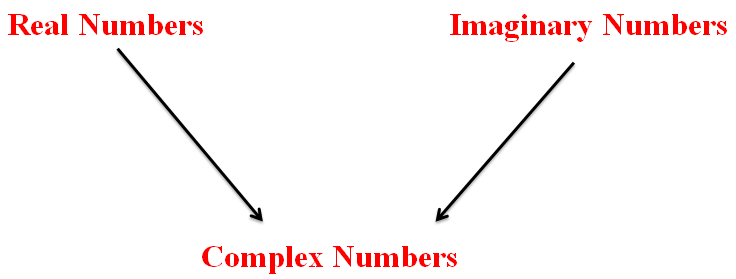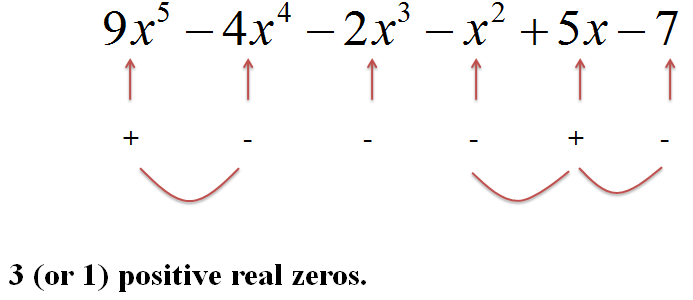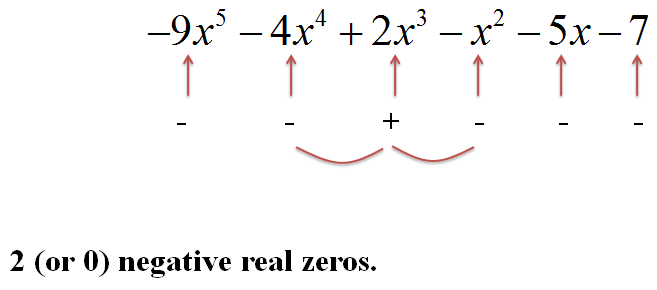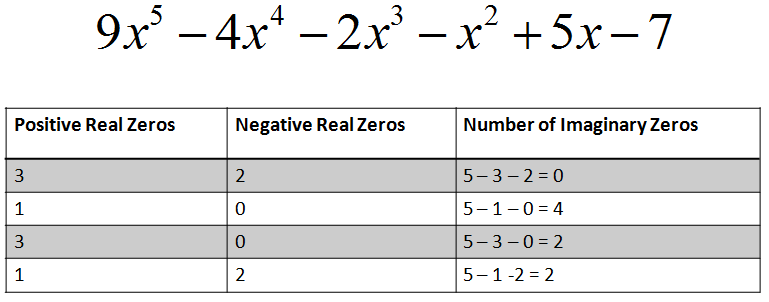| Fundamental Theorem of Algebra |
|---|
|
Every polynomial equation with complex coordinates and a degree greater than zero has at least one root in the set of complex numbers. 
|
A polynomial equation with degree n will have n roots in the set of complex numbers.
| Descartes� Rule of Signs |
|---|
|
Descartes� Rule of Signs can be used to determine the number of positive real zeros, negative real zeros, and imaginary zeros in a polynomial function. |
How many zeros (and what kinds of zeros) does this equation have?

|
| Figure 1. |
|---|
After arranging the terms of a polynomial equation into descending powers:
The number of positive real zeros in y = P(x) is equal to the number of changes of sign in front of each term, or is less than this by an even number
and
The number of negative real zeros in y = P(x) is the same as the number of changes of sign in front of the terms of P(-x), or is less than this value by an even number.
First, we test for the number of positive real zeros:

|
| Figure 2. |
|---|
Second, we test for the number of negative real zeros:

|
| Figure 3. |
|---|
So, how many different combinations of zeros (and what kinds of zeros) does this equation have?

|
| Figure 4. |
|---|